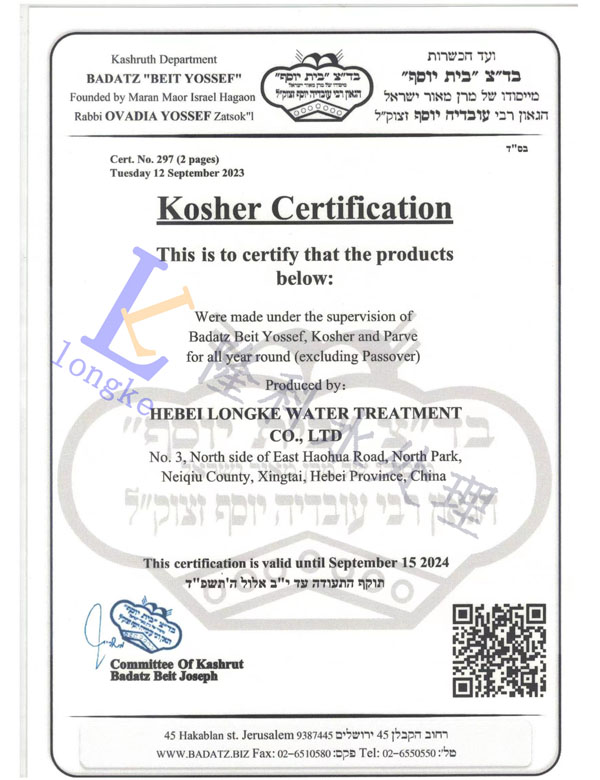Polyacrylamide Flocculant Applications and Benefits in Water Treatment Processes
Polyacrylamide Flocculant A Comprehensive Overview
Polyacrylamide flocculants have emerged as vital agents in various industrial and environmental applications. This synthetic polymer, composed of acrylamide monomers, is widely used for its exceptional ability to enhance the separation of solid particles from liquids, making it indispensable in sectors such as water treatment, paper manufacturing, and mining.
What is Polyacrylamide?
Polyacrylamide (PAM) is a water-soluble polymer that is formed through the polymerization of acrylamide. This process can yield various forms of PAM, each with unique properties and applications. Polyacrylamide exists in several molecular weights and can be categorized into three main types anionic, cationic, and nonionic. The choice of type depends largely on the specific application and the characteristics of the materials being treated.
Mechanism of Action
The effectiveness of polyacrylamide as a flocculant stems from its ability to agglomerate fine particles, facilitating their removal from water. The polymer chains can bridge the gap between particles, creating larger flocs that can easily settle or be filtered out. This process occurs through mechanisms such as charge neutralization, wherein cationic PAM attracts negatively charged particles, and polymer bridging, where the long chains interconnect multiple particles.
Applications
1. Water Treatment One of the most significant applications of polyacrylamide flocculants is in water treatment facilities. They are utilized to clarify drinking water, treat wastewater, and manage sludge. By enhancing the sedimentation process, PAM helps reduce the total suspended solids (TSS) and improves water quality.
2. Mining In the mining industry, polyacrylamide is used to separate valuable minerals from ore. It plays a crucial role in the flotation process, where it helps concentrate minerals by aiding in the aggregation of particles.
polyacrylamide flocculant

3. Paper Manufacturing Polyacrylamide is also utilized in the paper industry as a wet-strength resin. It improves the process of papermaking by increasing the retention of fibers and fillers, leading to enhanced product quality and reduced waste.
4. Agriculture In agricultural practices, PAM is applied to reduce soil erosion and improve water retention in soils. By enhancing soil structure, polyacrylamide helps increase crop yields, especially in arid regions.
5. Oil Recovery Polyacrylamide flocculants are used in enhanced oil recovery processes. They improve the efficiency of oil extraction by reducing water viscosity, facilitating better displacement of oil from reservoirs.
Environmental Considerations
While polyacrylamide is a powerful tool across various industries, it is essential to consider its environmental impact. The use of acrylamide, a potentially hazardous substance, underpins the need for careful handling and regulation. When degraded, polyacrylamide can break down into acrylamide monomers, which necessitates stringent controls to mitigate risks associated with exposure. The development of more environmentally-friendly alternatives continues to be a focus area for researchers and manufacturers alike.
Future Directions
Looking ahead, the demand for polyacrylamide flocculants is expected to grow, particularly in the context of stricter environmental regulations and the need for improved water resource management. Innovations such as biopolymer-based flocculants and greener synthesis methods are gaining attention, presenting opportunities for sustainable solutions. Ongoing research aims to optimize the performance of polyacrylamide while minimizing its ecological footprint.
Conclusion
In conclusion, polyacrylamide flocculants are versatile agents integral to various industries, providing essential solutions for water treatment, mining, agriculture, and beyond. Understanding their properties, applications, and potential environmental impacts is crucial for optimizing their use. As industries move towards more sustainable practices, the evolution of polyacrylamide and its alternatives will play a pivotal role in addressing the challenges of the future. With continued innovation, the quest for efficient and safe flocculation methods is set to enhance operational effectiveness while safeguarding environmental integrity.
-
Water Treatment with Flocculant Water TreatmentNewsJun.12,2025
-
Polymaleic AnhydrideNewsJun.12,2025
-
Polyaspartic AcidNewsJun.12,2025
-
Enhance Industrial Processes with IsothiazolinonesNewsJun.12,2025
-
Enhance Industrial Processes with PBTCA SolutionsNewsJun.12,2025
-
Dodecyldimethylbenzylammonium Chloride SolutionsNewsJun.12,2025





